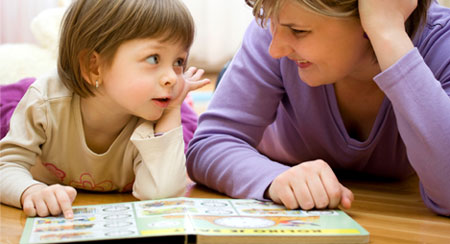Floortime Therapy, which is a component of the DIR model (where DIR stands for Developmental, Individual-Difference, Relationship-based) was developed by Dr. Stanley Greenspan as a holistic therapy for children on the autism spectrum.
Floortime Therapy requires parents, therapists and other adults to engage with children and follow their lead so as to connect and communicate with them at their developmental level. It can cause augmentation of existing strengths that eventually help autistic children acquire new functional skills.

Emulating a child’s actions:
The most effective and powerful way to understand the emotional side of a child on the spectrum is through their interests. Parents as well as therapists can gain insight into the reasons why the children enjoy doing what they do; this information can guide the adults when the kids have trouble expressing themselves verbally in some situations.
More importantly, this information can help the adults lead the reclusive children into a common shared world and provide the necessary impetus to make them more socially-interactive and communicative.
A Common Shared World
Leading the child into a common shared world helps the child achieve the skills, which Dr. Greenspan called Functional Emotional Developmental Capacities (FEDC). These skills are largely related to the important developmental aspects of communication, thinking and relating.
As a child opens up progressively with Floortime therapy sessions, he/she:
- Becomes more trusting towards others,
- Becomes less averse towards communicating with others,
- Can establish more meaningful interactions with their parents and other family members.
With Floortime Therapy, adults can lead an autistic child into more complex interactions and activities and effectuate advanced linguistic skills and problem solving capabilities in them.
It can be said that the ultimate goal of the dynamic Floortime Therapy is to help children with autism and ASD (Autism Spectrum Disorders) become more reflective, empathetic, open, creative and trusting individuals after they have conquered all the developmental milestones.